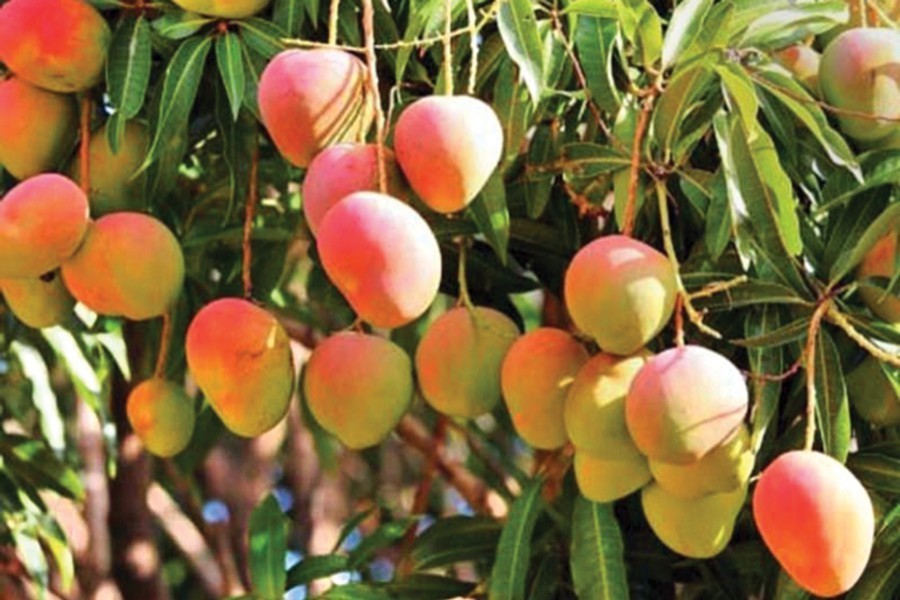The resumption of mango export from Bangladesh after a gap of one year, plagued by Covid-19, is filled with good omen. The farmers and exporters are evidently happy, so are the government authorities involved directly in the whole process. Notable among them is the Department of Agriculture Extension (DAE). The mangoes have been collected from Satkhira district and the Rajshahi region - the Chapainawabganj district in particular. Although the very first consignment, an individual initiative, comprised 4,000kg Himsagar variety of mangoes, the DAE predicts a two-fold increase in total export orders for the luscious fruit from Europe this year. A news agency source puts the volume of mango exports from Rajshahi alone to four European countries this season at 333 tonnes. The hope is based on the fast increase in popularity of the Bangladesh mangoes in the European continent and some Middle Eastern countries. The Himsagar, or Khirshapat, mangoes enjoy the prime place among the current year's export consignments. The popular mango received the prestigious GI (geographical indication) tag in 2019.
Viewing it in a broader perspective, the global conquest of the sweet and fragrant Bangladeshi mangoes has long been aforegone conclusion. These mangoes, different from the fibrous and sour-sweet 'deshi' ones, grow abundantly in Satkhira and the greater Rajshahi region. The reason it had not been chosen as a lucrative export-worthy fruit could be traced to the policymakers' tendency to attach little value to this fruit-crop. In the last few years, it has been heartening to see the country's ripe mangoes being displayed alongside foreign fruits in many overseas markets. With the buyers comprising mainly Bangladeshis and South Asians living abroad, local people in Germany, France, Italy, UK and Switzerland are also found being drawn to the juicy mangoes.
There are, however, a few distressing, though faint, signs in the country's mango export. According to local mango experts, although Bangladesh has witnessed a noticeably dominant position in the fruit's export, it ought to remain prepared for challenges posed by the other Asian mango-producing countries. Judging by sweet taste, aroma and spotless look, these mangoes might in time emerge as more tempting than those from Bangladesh. One of the few reasons for this could be the care and labour given to the fruits from the tender to ripe stages. Compared to the times a decade ago, orchard owners in Bangladesh are more attentive to the fruit's growth today. Earlier insecticides, use of disproportionate chemicals etc were common in the mango orchards. Thanks to the constant inspection of the trees, and the mature fruits by the DAE people, the farmers feel encouraged to see their mangoes grow hygienically. Besides, there is no dearth of expert counselling.
Growing exportable mangoes demands more investment than is required for the fruits aimed at local consumption. Growers are prepared to spend more on advanced methods of farming technologies, as they know mango exports fetch more profits than they earn in local markets. Growing orchards of quality mangoes alongside the native ones has been in practice in this land for ages. The soil and weather of the southwestern Bangladesh are especially suited for growing high-quality mangoes. They are different from the fruits grown elsewhere in South and Southeast Asia. It's undeniable that state patronage and expediting the application of modern agro-technology to the sector can make Bangladesh mangoes stand out in the overseas market. Nation's export earnings from mango are still negligible. The authorities' continued focus on the fruit-crop and its rising popularity overseas can, of course, make its economic potential a welcome reality.


